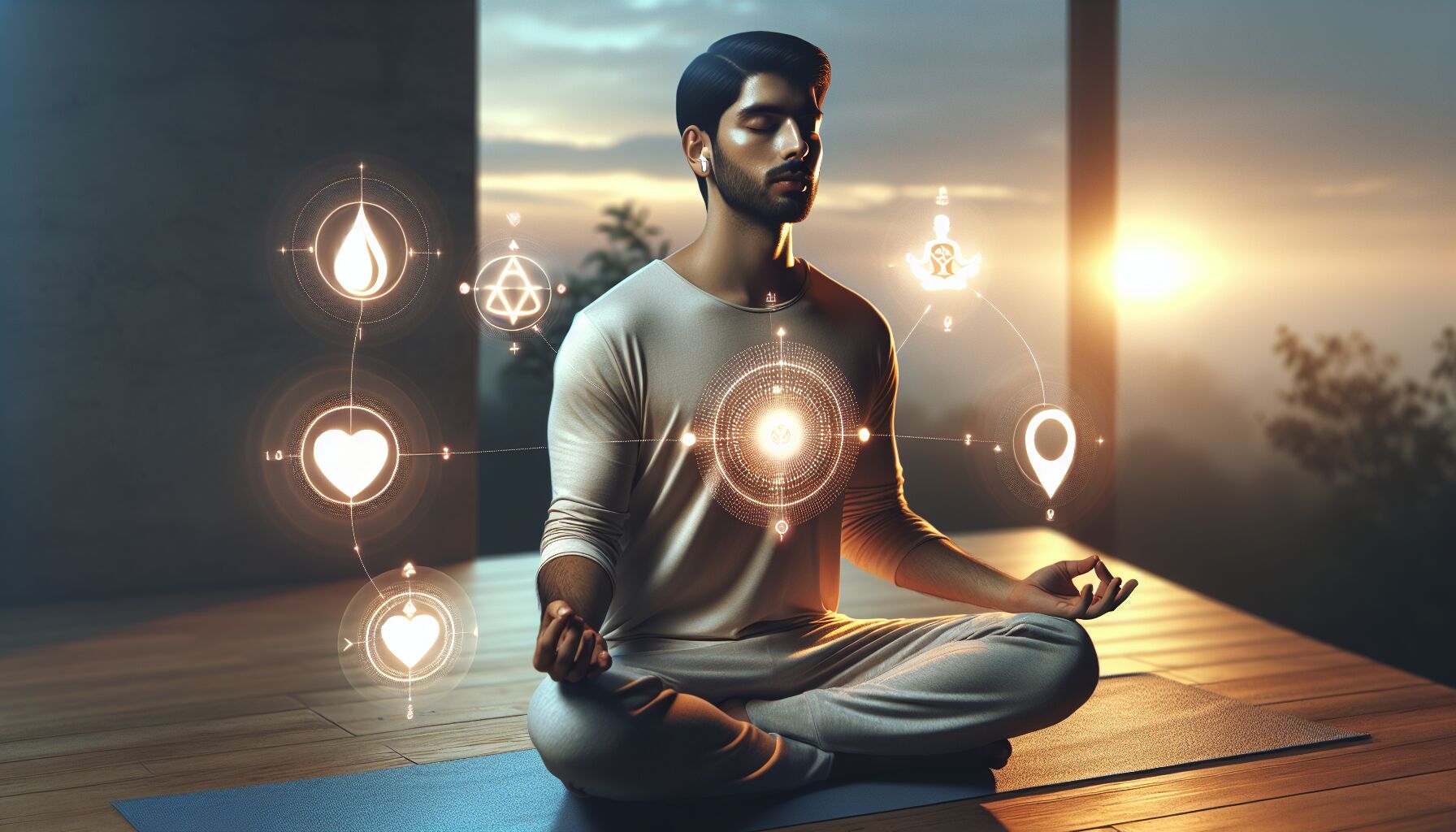 There’s no one-size-fits-all for meditation. What works wonders for your neighbor might leave you staring at the wall, wondering why your thoughts won’t play nice. That’s why finding the right style of meditation isn’t about following trends — it’s about listening. Not just to your mind, but to your body, your rhythms, your actual life. And maybe asking some honest questions. What do you need more of? Focus? Softness? A bit of silence between the static?
There’s no one-size-fits-all for meditation. What works wonders for your neighbor might leave you staring at the wall, wondering why your thoughts won’t play nice. That’s why finding the right style of meditation isn’t about following trends — it’s about listening. Not just to your mind, but to your body, your rhythms, your actual life. And maybe asking some honest questions. What do you need more of? Focus? Softness? A bit of silence between the static?
Let’s walk through a few of the main approaches — consider this your menu of stillness.
- Mindfulness meditation — the art of being where you are, with all your senses online. This Buddhism-rooted approach is probably the most accessible (and researched) path to bring gentle awareness to the present moment. It’s not about “not thinking” — that’s a myth. It’s about noticing thoughts, letting them pass like weather, and returning to your breath or body. According to a study published in NCBI, regular mindfulness practice can reduce anxiety, improve focus, and even change brain structure related to emotional regulation.
- Body scan meditation — for when life’s static lives in the body more than the mind. This style slowly guides your attention through each part of your body, noticing sensations without judgment. It’s often used for stress management, chronic pain, or just grounding yourself after a long day. It’s deeply somatic — meaning, you drop *out* of your thoughts and sink *into* your tissues. Great for folks who say, “I can’t sit still” — because here, you’re not sitting still, you’re *feeling* stillness.
- Loving-kindness (Metta) meditation — training for the heart, and not in a sweet Hallmark way. It involves offering sincere wishes of well-being—first to yourself, then to others, then out wider. “May I be safe; may you be happy.” It’s surprisingly radical. If you’ve felt numb, cynical, or emotionally porous, this builds resilience without shutting your heart. Thich Nhat Hanh once said,
“Compassion is a verb.”
This practice helps it become one.
- Mantra meditation — rhythm meets repetition. Here, you use a syllable, word, or phrase (like OM or “so hum”) either silently or aloud to anchor your awareness. It can be especially helpful if your thoughts cling like burrs to your brain. Vedic and yogic traditions tap into mantras not just for focus, but for vibrational tuning. And no, it doesn’t require spiritual dogma — even secular mantras can soothe the nervous system. Think of it as mental music with no playlist needed.
- Guided visualization — storytime for grown-ups, with a point. Usually led by an audio guide, this style invites you into a safe internal landscape: mountain lakes, candlelit rooms, radiant light… you name it. While some think it’s “less serious,” guided imagery can restore focus, stir self-discovery, and recalibrate internal narratives (especially during healing work). It’s a portal — if you let it be.
Now, here’s the thing — don’t get stuck on categories. Some days, breathwork feels right. Other days, it’s a mantra or silence. That’s okay. Meditation isn’t about mastering a method; it’s about reclaiming your mental living room from chaos. You’re not building a shrine — you’re clearing the clutter. If anything, think of each technique as a tool in your spiritual toolbox.
Some practical tips when choosing?
- Ask what you’re drawn to — not what’s popular. If you fall asleep during visualizations, maybe you need something more tactile like breath counting. If your mind races, a mantra might help wrangle it.
- Match your lifestyle, not your wishlist. If you’ve got 10 unpredictable minutes in the carpool lane, mindfulness is doable. A 45-minute Zen session? Probably not.
- Consider emotional readiness. Some methods like loving-kindness stir deep waters. If that’s too raw, start with breath or body-based practices—steady before stormy.
Creating your meditation space
Let’s talk about where you sit—and why it matters more than we give it credit for. Your environment doesn’t need to look like a retreat center in the Himalayas, and you don’t need silk cushions or incense if that’s not your thing. But what you absolutely do need is a space that feels grounded, safe, and free of static. Because let’s be honest—how do you expect your mind to unclench itself if your space keeps yelling at it?
Start with what’s real: where do you already feel a bit settled during the day? Maybe it’s that corner near the window where the late afternoon sun hits just right. Or a quiet spot beside your houseplants—the ones that haven’t died on you yet. Stay practical. You’re not creating a showpiece for social media. You’re crafting a refuge for self-awareness, where the nervous system can finally take off its boots and rest.
Now, whether you’ve got a whole room or just a patch of floor, consistency builds familiarity. And with familiarity comes relaxation. Over time, your body will start associating that space with slowing down—much like your bed cues sleep, or your stove signals mealtime. That physical-spatial pairing is potent.
Here’s how to set it up without making it another stressful to-do:
- Keep it clean, but not sterile. Clutter distracts. Dust hints at apathy. But perfectionism? That’s just another way to self-sabotage. Aim for simple and sacred. A folded blanket, a candle, a ceramic bowl to hold your mala beads or headphones—whatever brings a sense of ritual without screaming “try-hard.”
- Think comfort, not collapse. You want your posture supported, not slouched into a nap. That might mean a firm cushion (a zafu or folded towel both work), your back against a wall, or even sitting in a sturdy chair. The goal? Alertness with ease. If you’re constantly fidgeting, adjust the setup, not your expectations.
- Limit stimulation. This isn’t the time for bright lights, buzzing notifications, or heavy fragrances unless they serve a purpose. Natural light in the morning grounds your circadian rhythm. Soft lamplight at night signals downtime. If you use scents, choose consciously—lavender for calm, vetiver for grounding, palo santo for clearing. Less is more when your senses are sharpening.
One thing often missed? Temperature. Ever tried to meditate with cold feet? It doesn’t work. Keep something warm nearby—a shawl, wool socks, a ceramic mug. From a mindfulness perspective, comfort isn’t indulgent. It’s functional. When the body feels safe, it stops alerting the brain every five seconds.
And then there’s sound. Some need silence so still it hums. Others find stillness more easily with a little ambient backdrop. Nature tracks, gongs, binaural beats—whatever quiets the inner chatter without taking center stage. You can explore open-source soundscapes like those from Earth.fm or minimal compositions found on this study on auditory relaxation response. The point is to choose with attention, not just hit ‘play.’
If you’re sharing your home, boundaries matter more than Buddha statues. You might need to say, “I’m taking 15 minutes.” Or use nonverbal cues—a scarf on the doorknob, the scent of frankincense drifting under the door. Kids, roommates, even pets can learn the rhythm if you stay consistent.
And here’s something that seems counterintuitive but works: personal items that have emotional weight can shift your mental state quickly. A photo of someone who inspires your self-discovery journey. A worn book where a phrase once cracked you wide open. These aren’t distractions—they’re grounding anchors. Honest objects you can orient toward when your thoughts scatter.
“To know the world, know your room. To still the mind, honor the place where it unfolds.” — Unknown Zen saying
You might be wondering if car meditation counts. Actually, yes—if it’s intentional. Your ‘space’ doesn’t have to be fixed. It has to be respected. There’s power in a glove-box journal, a silent moment before errands, a breathing pause before emails. It’s not always about place—it’s about presence.
Still, if you can claim a physical spot—even a fold-down crate in a closet—you’re telling your nervous system: “This is where I remember myself.” That’s no small thing.
Presence invites presence. Once your space begins to reflect calm, you’ll find it easier to meet the moment with steadiness. And that’s when meditation slides from “task” to sanctuary. Not because the space is holy—but because you show up like it is.
Establishing a daily practice routine
 So here’s the honest truth—building a daily meditation practice isn’t about willpower. It’s about rhythm. Like tending a fire, it doesn’t take much at first—just enough consistency to keep the coals alive. Skip a few mornings? Sure, life happens. But if you treat meditation like brushing your teeth—automatic, non-negotiable, and no big deal—you’ll notice it begins to shape your internal landscape without fanfare. And that’s where the real change begins.
So here’s the honest truth—building a daily meditation practice isn’t about willpower. It’s about rhythm. Like tending a fire, it doesn’t take much at first—just enough consistency to keep the coals alive. Skip a few mornings? Sure, life happens. But if you treat meditation like brushing your teeth—automatic, non-negotiable, and no big deal—you’ll notice it begins to shape your internal landscape without fanfare. And that’s where the real change begins.Let me explain something most people gloss over: the hardest part isn’t sitting. It’s remembering *to* sit. That’s why structure matters.
Here’s a reliable framework that works for many, especially when life feels full:
- Pick a *realistic* time slot: Not the one you *wish* you had, but the one that actually exists. Early morning before the house stirs? During lunch with the door closed? Ten minutes post-shower? Choose a window where interruptions are minimal. For many, setting the tone with 5–10 minutes right after waking helps the practice feel like a gateway—not an afterthought.
- Start short, go steady: If you’re just getting familiar with mindfulness or relaxation techniques, go with manageable chunks. That might mean five minutes of breath awareness or a short guided body scan from apps like Insight Timer or recordings from trusted guides like Tara Brach or Jack Kornfield. The key isn’t how long—it’s how regular.
- Link meditation to another habit: Known as ‘anchoring,’ this tactic wires the new habit to an existing one. Sit right after you drink your tea. Or once you turn off your alarm. The brain loves associations—it builds rituals without you trying so hard.
You don’t need monk-level discipline. You need repetition with a nod of reverence. One teacher likened it to sweeping the mind’s porch every morning—not because it’s dirty, but because leaves inevitably fall.
You might notice resistance creep in some days. That’s not failure. That’s friction—proof that the practice is working at deeper levels. Welcome it, even briefly. Sit for 60 seconds if that’s all you can. One deep breath in silence is more nourishing than five minutes scrolling past “wellness” memes.
Speaking of time—there’s no rule that it has to be in the morning. Many people find comfort in evening sits, where meditation becomes digestion for the emotional and cognitive noise of the day. Ever sat quietly before bed instead of watching that last episode? It can shift your sleep, mood, even dreams. Research from the National Center for Biotechnology Information shows that even short meditation sessions before sleep can reduce insomnia and ease the nervous system into deep rest.
But mornings do offer a cleaner slate. There’s a reason sages and farmers alike rise with the sun—the hours before the world wakes are often fertile ground. Still, don’t romanticize it. If the baby cries at 6 am or your job starts early, then your practice *meets* you—wherever that is.
Now here’s where personal style comes in again. Maybe sitting feels stale. Try a walking meditation—ten barefoot steps across your porch. Or five mindful inhales before turning the key in your car. Maybe mornings are chaos, but mid-afternoon tea in silence feels doable. There’s no rigid formula. The secret is to *show up* with sincerity, whatever time and method that means for you.
Once you’ve nailed down even a sketchy rhythm, you can start layering in richness. Keep a simple log—a few scribbled notes in a notebook or app like Journey or Day One. Not for achievement, but for self-discovery. Over time, patterns emerge. You’ll start to notice, “Ah, I’m calmer on days I meditate before social interaction,” or “When I skip three days, I feel scattered.”
Life moves in seasons. Some days blossom with inspiration and inner clarity. Others feel foggy and mechanical. Both are welcome. Meditation honors cycles—it doesn’t demand constancy, only return.
And let’s stretch beyond solo practice for a second. Ever shared silent space with someone? A partner, a pet, a small group? Even five minutes can deepen connection without a word. Community, even virtual sangha, can remind you that you’re not going it alone. Platforms like Dharma Seed or the weekly Zoom sessions of Upaya Zen Center offer real, rooted teachings for anyone curious about dropping deeper—not into dogma, but presence.
One last tip—and it’s deceptively simple: end each session with a pause. A breath. Don’t just pop up and start making pancakes or returning emails. Let the silence echo for a few seconds. That lingering stillness often holds the most insight. It’s like after a good conversation—what remains unsaid tells you everything.
“You should sit in meditation for 20 minutes a day—unless you’re too busy. Then you should sit for an hour.”
 DS Haven In Light Of Things
DS Haven In Light Of Things






